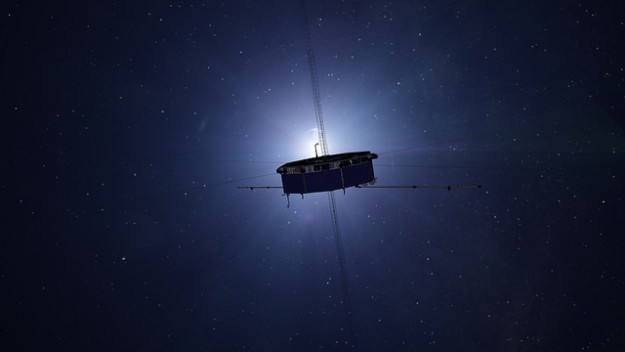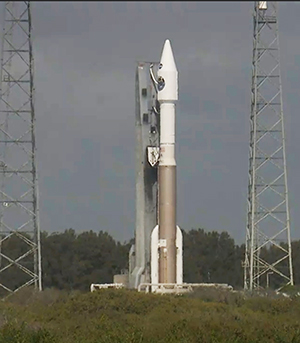
There aren’t many people from Sweden who get to do what Göran Marklund and Per-Arne Lindqvist are doing this week. Actually, I doubt there are any.
The two Swedish space and plasma physics scientists are in Florida, holed up in scientific meetings with their colleagues on a 1-billion dollar NASA mission. By Thursday night in the U.S., they’ll be watching from the bleachers in Cape Canaveral, as an Atlas V 421 rocket lifts off with instruments they’ve worked on for the past 10 years.
“I’ve never been on any launch of a big satellite mission,” says Marklund. “But I have been involved in a number of launches of smaller Swedish and international rockets.”
Marklund and Lindqvist are part of a team from KTH Royal Institute of Technology that created probes for the Magnetospheric Multiscale (MMS) Mission, which sets out to understand the process of reconnection in Earth’s magnetosphere, as well as in the rest of the observable universe (see related article).
Their equipment will measure all three components of the electric field in Earth’s magnetosphere, with unprecedented resolution—on the order of milliseconds. But they’ll have to wait weeks until the instruments can actually start collecting data.
“On smaller Swedish spacecraft, it doesn’t take more than a day before we can start switching instruments on and we have to get back to KTH to start taking data,” Lindqvist says.
“But for these much larger ESA and NASA missions,” Marklund interjects, “they have things to do on the spacecraft, to put them into orbit, to get them into the constellation, etc., so it can take a week before they are ready to start switching on instruments.”
Both scientists will return to Sweden after the launch, but Lindqvist will fly to the MMS Science Operation Center at Colorado University in Boulder on April 3, to join in the four-week-long process of commissioning the electric field instruments on the four spacecraft being launched.
“All instruments are switched on, one-by-one and checked,” Lindqvist explains. “A very long part of the commissioning is for our instruments, because we have these long wire booms which have to be deployed carefully, one after the other, in sequence.”
Work will go on around the clock so that the commissioning of the KTH instruments will be interspersed with other equipment. But it has to be done in stages over weeks, and at all hours of the day. “I won’t be concerned with regular office hours,” Lindqvist says.
Marklund and Lindqvist will be responsible for the procedure when the 60 m long wire booms are ejected. “I’ve been responsible all along in planning the details about how far we go out with each boom, and where we want to stop and what the spin rate should be in order for things to be deployed properly,” Lindqvist says.

“We have 16 booms to deploy, two at a time to keep it stable, that is, the opposing booms,” he says. “These are held out by the centrifugal force in the spin plane. We also built the electronics for the axial booms, but the mechanical properties are different for them. You have to be sure the spacecraft is stable, so it doesn’t tip over. This is why the 12-13 m long axial booms need to be deployed after the radial booms have been fully deployed, stabilizing the spacecraft.”
Together, these six booms make up the electric field instruments of the spacecraft. “We have an operation almost every day,” Lindqvist says.
But first there’s the matter of launching the Atlas V 421 rocket that carries the four MMS vehicles. “We’ll arrive at the Kennedy Space Center visitors complex, where we can park and then we’re taken to the Apollo/Saturn V Center, for a reception the evening before the launch.”
The two will be seated on bleachers about 9 km from the launch pad, which sounds far away, but in reality is close enough for the stunning display very few people ever get to see.
There’s even a chance they can visit the launch pad before blast-off. “We heard however that only U.S. citizens can go to the launch pad, but these things change all the time,” Lindqvist says. “We’ll see.”
David Callahan
